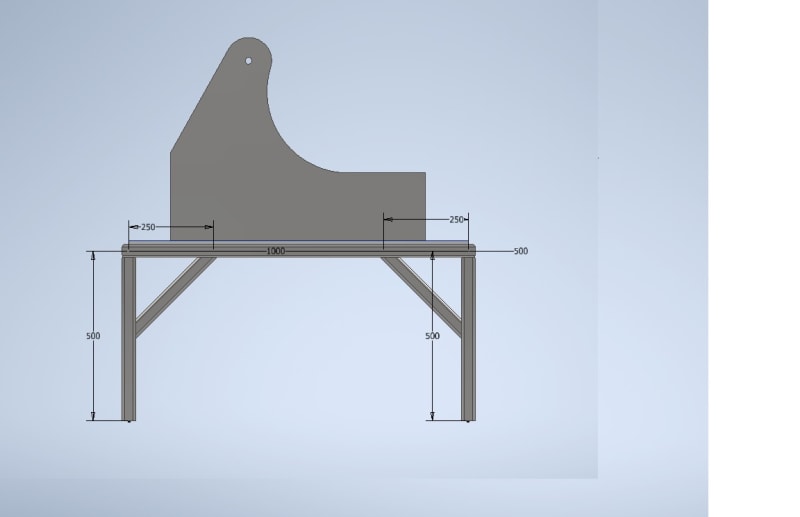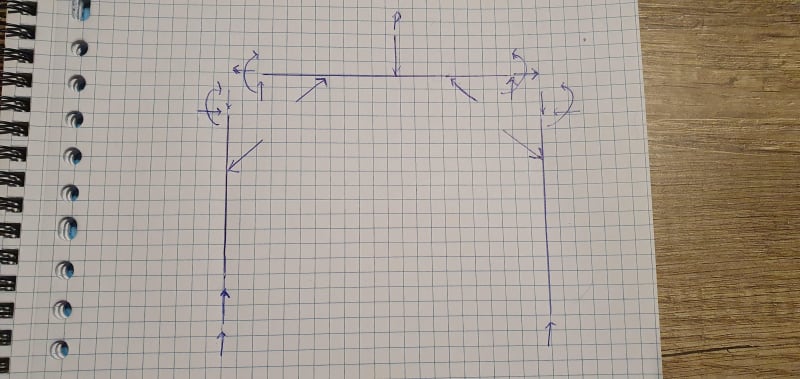Josv
Mechanical
- Jan 13, 2021
- 4
Hello,
Last Octobre I graduated and received my associate degree in mechanical engineering. Since then I'm working for a company which designs food processing machines. Since the beginning I'm struggling with some engineering tasks, mainly the calculation of frames. In my study I learned the basics about statics, mostly simple beams etc. When I have to calculate simple beams and determine the internal forces and stresses I'm doing just fine. Also pinned frame connections I get. I asked my fellow engineers at work how they calculate and design frames. Their answer is: experience!. This is an answer that does not satisfy my needs. I want to understand what I'm doing and I want to analyze my frame design. I want to know where are the most important stresses and how can I improve my design. I want to be able to hand calculate my frames and based of these hand calculation make a decision.
I was wondering if some of you guys have some tips for me? I have made a simple design in Inventor of a frame with a "machine" on it. I was wondering how you guys would attack this problem and how to hand calculate this issue so that you can see where the biggest stresses are? I have tried do dismember the frame just like a pinned frame, but that leaves me with to many unknowns (maybe use compatibility equations???). It's a welded frame, simple supported, 40x40x3 beams and the weight of the machine is let's say 500kg, with the center of gravity at 2/3 (750mm) of the length and 1/2(250mm) of the width. Assume material is the same.
I'm not asking for a complete calculation, but I'm asking for some guidance. How can I simplify this, I feel the need to base my designs on actual knowledge rather than guessing and gut feeling. Is this maybe to difficult by hand? I can use FEA but I have always learned to first use hand calculations and use FEA to verify your results. Thanks in advance.


Last Octobre I graduated and received my associate degree in mechanical engineering. Since then I'm working for a company which designs food processing machines. Since the beginning I'm struggling with some engineering tasks, mainly the calculation of frames. In my study I learned the basics about statics, mostly simple beams etc. When I have to calculate simple beams and determine the internal forces and stresses I'm doing just fine. Also pinned frame connections I get. I asked my fellow engineers at work how they calculate and design frames. Their answer is: experience!. This is an answer that does not satisfy my needs. I want to understand what I'm doing and I want to analyze my frame design. I want to know where are the most important stresses and how can I improve my design. I want to be able to hand calculate my frames and based of these hand calculation make a decision.
I was wondering if some of you guys have some tips for me? I have made a simple design in Inventor of a frame with a "machine" on it. I was wondering how you guys would attack this problem and how to hand calculate this issue so that you can see where the biggest stresses are? I have tried do dismember the frame just like a pinned frame, but that leaves me with to many unknowns (maybe use compatibility equations???). It's a welded frame, simple supported, 40x40x3 beams and the weight of the machine is let's say 500kg, with the center of gravity at 2/3 (750mm) of the length and 1/2(250mm) of the width. Assume material is the same.
I'm not asking for a complete calculation, but I'm asking for some guidance. How can I simplify this, I feel the need to base my designs on actual knowledge rather than guessing and gut feeling. Is this maybe to difficult by hand? I can use FEA but I have always learned to first use hand calculations and use FEA to verify your results. Thanks in advance.




